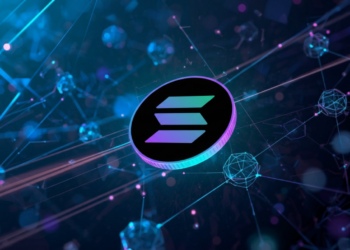In the fast-evolving world of cryptocurrencies and blockchain technology, innovative solutions are constantly emerging to tackle challenges like scalability, transaction speed, and network congestion. While most people are familiar with blockchain—the foundational technology behind Bitcoin and Ethereum—another lesser-known but increasingly important data structure is gaining traction: the Directed Acyclic Graph (DAG).
So, what exactly is a DAG in the context of cryptocurrency? How does it differ from traditional blockchain systems? And why are some experts calling it the future of decentralized technology? Let’s break it all down in this comprehensive yet approachable guide.
Understanding the Basics: What Is a DAG?
A Directed Acyclic Graph (DAG) is a type of data structure that, as the name suggests, is directed and acyclic:
- Directed means that connections (or edges) between points (or nodes) have a specific direction.
- Acyclic means that the structure doesn’t loop back on itself—there are no cycles.
Think of it as a flowchart or a family tree. Each point in the graph leads to another, but no point ever leads back to itself. This structure is not exclusive to cryptocurrency; DAGs are used in many areas of computer science and data processing. However, in the world of crypto, DAGs offer a new way of recording and validating transactions—without relying on the traditional blockchain.
Blockchain vs. DAG: Key Differences
Before diving into how DAGs work in cryptocurrency, it’s helpful to understand how they differ from blockchains.
| Feature | Blockchain | DAG |
|---|---|---|
| Structure | Linear chain of blocks | Network of interconnected transactions |
| Consensus | Miners/Validators process blocks | Users confirm previous transactions |
| Scalability | Limited (can be slow and congested) | Highly scalable and parallel |
| Transaction Speed | Slower (especially during congestion) | Faster due to no blocks |
| Fees | Often higher | Generally lower or zero fees |
While blockchains like Bitcoin process transactions in groups (blocks) that are mined at intervals, DAG-based systems process transactions individually, often simultaneously. This allows for faster, more scalable systems—ideal for high-frequency transactions.
How Does DAG Work in Cryptocurrency?
In DAG-based cryptocurrencies, each new transaction validates one or more previous transactions. Instead of grouping transactions into blocks, DAG systems allow transactions to directly reference each other.
Let’s simplify it:
- You want to make a transaction.
- Before your transaction is accepted, your wallet must validate two or more earlier transactions.
- Once your transaction is confirmed, it becomes a part of the DAG network and can be referenced by future transactions.
This approach creates a web-like structure of interlinked transactions. The more transactions that get added, the more secure the network becomes—without the need for energy-intensive mining or complex validator mechanisms.
Real-World Examples of DAG-Based Cryptocurrencies
A few notable cryptocurrencies use DAG architecture instead of traditional blockchain:
1. IOTA
IOTA uses a version of DAG called the Tangle. It was designed for the Internet of Things (IoT) and allows feeless, fast microtransactions. In IOTA, every new transaction validates two prior transactions, securing the network while keeping costs virtually zero.
2. Nano
Nano is a lightweight, scalable crypto designed for instant, fee-less transactions. It uses a variation of DAG called a block-lattice where each user has their own blockchain (or chain of blocks), making the entire network more efficient and parallelized.
3. Fantom
Fantom employs a DAG-based consensus mechanism known as Lachesis, which enables high-speed and low-latency finality for smart contracts and decentralized apps (dApps).
Benefits of DAG in Cryptocurrency
DAG-based systems offer several advantages over traditional blockchain technology:
1. High Scalability
Because DAG doesn’t rely on blocks or sequential mining, it can process many transactions at the same time. This parallelism drastically improves throughput and minimizes congestion.
2. Lower or Zero Transaction Fees
In many DAG systems like IOTA or Nano, there are no miners. This eliminates the need for transaction fees, making DAG an excellent solution for microtransactions.
3. Energy Efficiency
With no need for proof-of-work or mining, DAG networks consume much less energy compared to Bitcoin or Ethereum, making them more eco-friendly.
4. Faster Confirmation Times
Transactions in DAG networks can be confirmed in seconds (or less), which is ideal for real-time applications like IoT, payments, or supply chain tracking.
5. Decentralization at Scale
As more users participate in a DAG network by validating previous transactions, the system becomes more decentralized and secure—without requiring massive infrastructure.
Challenges and Limitations of DAG
While DAG is promising, it’s not without hurdles:
1. Security Risks
DAG is still a relatively new technology in crypto. Some experts worry about vulnerabilities like double-spending or Sybil attacks in small or immature DAG networks.
2. Lack of Maturity
Unlike blockchain, which has over a decade of development and testing, DAG is still in its early stages. Real-world adoption is limited compared to Ethereum or Bitcoin.
3. Complexity
The architecture and functioning of DAG networks can be harder to understand and implement than traditional blockchains, which might slow developer adoption.
4. Centralization Concerns
Some DAG projects, especially in early phases, may rely on centralized coordinators to secure the network, which can undermine the principles of decentralization.
Is DAG the Future of Cryptocurrency?
DAG is not necessarily a “blockchain killer,” but rather an alternative architecture that solves different problems. It’s particularly well-suited for:
- High-frequency, low-value transactions
- IoT applications
- Micro and nano payments
- Real-time data tracking
As the crypto ecosystem matures, we may see hybrid models that combine the robustness of blockchain with the scalability of DAG. Some projects are already exploring layered solutions or sidechains that leverage both technologies.
Use Cases Beyond Payments
While most people think of DAG in terms of payments, the technology can support a wide range of decentralized applications:
- Supply Chain Management – Track goods in real-time without delay or costly fees.
- Smart Cities – Power IoT devices that communicate with each other instantly.
- Healthcare – Secure, fast exchange of patient data between providers.
- Voting Systems – Enable quick and tamper-proof voting mechanisms.
Final Thoughts
The Directed Acyclic Graph (DAG) offers an exciting alternative to traditional blockchain systems. Its ability to process transactions rapidly, with low or no fees, makes it ideal for specific use cases that demand speed and scale. While still in its infancy compared to blockchains, DAG’s potential is enormous—especially in areas where conventional systems struggle.
If blockchain is the foundation of decentralized finance, DAG might just be the high-speed highway that helps crypto reach mass adoption.
Key Takeaways
- A Directed Acyclic Graph (DAG) is a data structure used in some cryptocurrencies as an alternative to blockchain.
- DAGs validate previous transactions directly, enabling faster and more scalable networks.
- Popular DAG-based cryptocurrencies include IOTA, Nano, and Fantom.
- Benefits include no mining, lower fees, faster transactions, and energy efficiency.
- Challenges remain, such as security, centralization risks, and technical complexity.
Join Us : Twitter | Website | GitHub | Telegram | Facebook | YouTube























